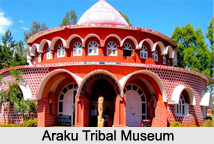 The concept of the National Museum of Natural History , in Delhi , of India, dawned on the Late Prime Minister of India , the wise and venerated, Srimati Indira Gandhi , during the observance of the Silver Jubilee of Indian independence in 1972. Indeed, Mrs. Gandhi, paid an excellent tribute to the natural abundance, that India is gifted with.
The concept of the National Museum of Natural History , in Delhi , of India, dawned on the Late Prime Minister of India , the wise and venerated, Srimati Indira Gandhi , during the observance of the Silver Jubilee of Indian independence in 1972. Indeed, Mrs. Gandhi, paid an excellent tribute to the natural abundance, that India is gifted with.
The Museum Authorities, chose 5th June, the World Environment Day, as the appropriate date for welcoming the eager visitors into its premises. Situated within the FICCI building, on Barakhamba Road, visitors , for the first time, entered the Museum, on 5th June, 1978, and viewed the Gallery of Natural History, presented in the most perfect manner. The motto behind selecting this specific date was definitely to assert environmental betterment as its ultimate mission. They were confident, that this National Museum of Natural History in India, would open up new vistas of knowledge and consciousness for the nascent but also for curious school-going students, the budding future of tomorrow`s India.
Taken care of by the Ministry of Environment and Forests, Government of India, the National Museum of Natural History in India, focuses on significance of the natural resources, the natural beauty, the natural environs, constituted by the flora , fauna and mineral matter, before the nation, not only, but to any lover of nature. Hence, the National Museum of Natural History, in India, has set the air abuzz with the message of conservation of nature.
 During a span of the last twenty-three years, three new galleries , a Discovery and Activity Room for pre-school little kids, have been furnished with this national institution of natural world, the National Museum of Natural History in India. Moreover, the Museum, has, begun, running two of its regional centers at Mysore and Bhopal. The third branch , is going to sprout at Bhubaneswar, the city of the World Famous Zoological Garden, of Nandan Kanan.
During a span of the last twenty-three years, three new galleries , a Discovery and Activity Room for pre-school little kids, have been furnished with this national institution of natural world, the National Museum of Natural History in India. Moreover, the Museum, has, begun, running two of its regional centers at Mysore and Bhopal. The third branch , is going to sprout at Bhubaneswar, the city of the World Famous Zoological Garden, of Nandan Kanan.
The National Museum of Natural History, imparts environmental education in a highly captivating fashion. It executes its operations through the emphasis on themes, projected in permanent galleries, invitation of direct participation in activities, such as that of Discovery Room, Activity Room, and appointments of conductors of education and expansion campaigns at the regional, national and international levels.
Daily, film-shows are aired between 11.30a.m. to 3.30 p.m. and educational lectures, and interactions take place among students and teachers .Besides, a number of events are organized by the Authorities of the National Museum of Natural History, in Delhi. For instance, "Know Your Environment", a consciousness-programme for teenagers, in summer; children`s engagement in paintings on nature and molding of animal or plants; workshops; arranging the National Environment Awareness Programme; audio-visual instruction, in schools, colleges and even in backward rural areas, special initiatives for handicapped children , introduction of Environmental Studies, as a discipline for Classes VII to XII, and so on, are the recent contributions of the National Museum for Natural History, to the life all around. 
The favourable visiting hours for National Museum of Natural History in India, is from 10.00a.m. to 5.00p.m., from Tuesday to Saturday, except on Sunday and Monday, when it remains closed .
The rare items of Museum collection, include, preserved Herpetological specimens, preserved butterflies, some mounted specimens etc. These also attribute to the prime attractions of the place. Thus tourists flock to the place to witness and learn about the environment enshrouding us from all aspects.
National Museum for Natural History, will assuredly enrich the natural treasure of our country.













